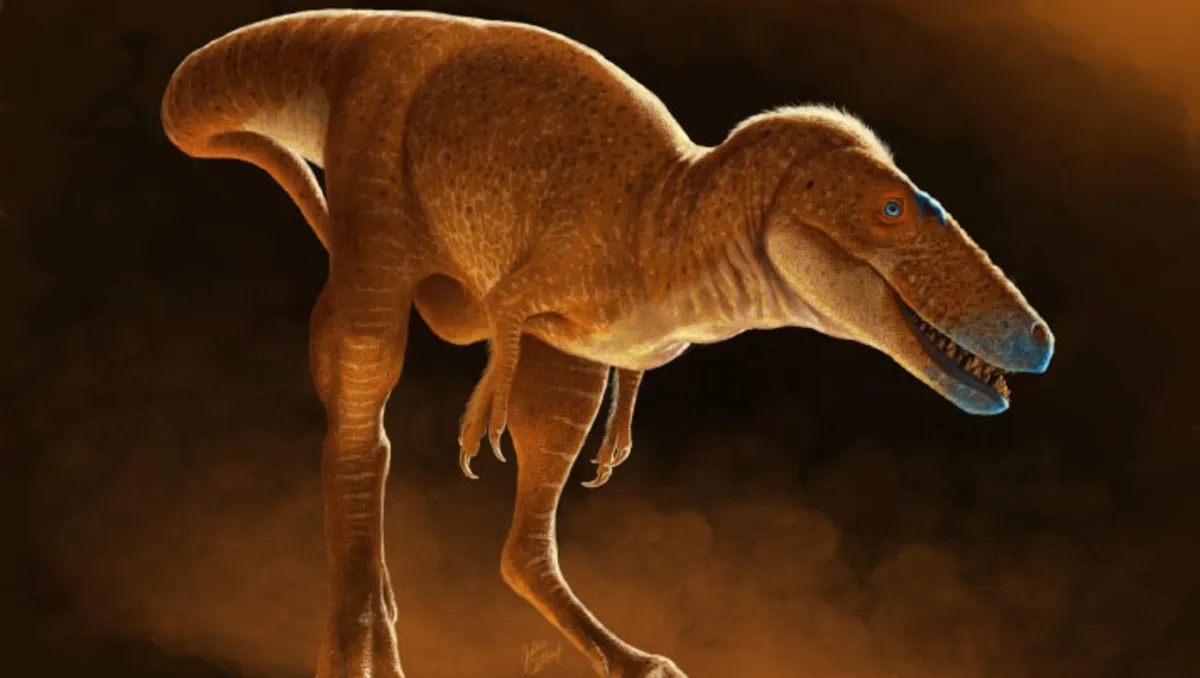
In a remarkable paleontological breakthrough, scientists have identified a new tyrannosauroid species named Khankhuuluu mongoliensis. This dinosaur is recognized as the closest-known ancestor to the iconic Tyrannosaurus rex, providing crucial insights into the evolutionary history of these formidable predators. Khankhuuluu mongoliensis roamed the Earth during the Cretaceous period, approximately 86 million years ago, showcasing the diverse range of life that once existed on our planet.
Khankhuuluu mongoliensis was a medium-sized and agile predator, roughly the size of a horse, weighing around 750 kg. This makes it significantly smaller—about two to three times less massive—than its later descendants, including the infamous T. rex. Notably, this dinosaur featured tiny, rudimentary horns that would evolve into more prominent structures in related species such as Albertosaurus and Gorgosaurus. These horns likely served purposes related to mating displays or intimidation.
The skull of Khankhuuluu mongoliensis was long and shallow, indicating that it lacked the bone-crunching ability of its descendant, the T. rex. This dinosaur can be classified as a mesopredator, similar to modern-day coyotes, relying on speed and agility to hunt its prey rather than sheer brute strength.
Dr. Jared Voris, a prominent paleontologist from the University of Calgary, remarked, “Khankhuuluu mongoliensis provides us the window into the ascent stage of tyrannosaur evolution; right when they’re transitioning from small predators to their apex predator form.” This discovery highlights the evolutionary trajectory of tyrannosaurs as they adapted and evolved over millions of years.
Partial skeletons of two Khankhuuluu mongoliensis individuals were unearthed in the Bayanshiree Formation in southeastern Mongolia during the years 1972 and 1973. A comprehensive phylogenetic analysis of these specimens suggests that Khankhuuluu mongoliensis is an immediate relative of the Eutyrannosauria group and serves as a close ancestor to both the massive, deep-snouted Tyrannosaurini and the smaller, shallow-snouted Alioramini clades.
Dr. Darla Zelenitsky, also from the University of Calgary, noted, “Khankhuuluu mongoliensis, or a closely related species, would have immigrated to North America from Asia around 85 million years ago.” This study provides compelling evidence that large tyrannosaurs first evolved in North America, following this pivotal immigration event. The findings indicate that the movement of tyrannosaurs between Asia and North America was less frequent and more structured than previously understood.
According to Zelenitsky, “Khankhuuluu mongoliensis, or one of its kin, traveled across a land bridge into North America, where it evolved into the famous apex predator Tyrannosaurus rex.” The fossil record reveals that tyrannosaurs were exclusive to North America for several million years before migrating back to Asia, where their lineage diverged into two distinct groups.
One group evolved into even larger apex predators, ultimately leading to the evolution of Tyrannosaurus rex, while the other adapted into a medium-sized, long-snouted species affectionately termed ‘Pinocchio rexes.’ This fascinating discovery enhances our understanding of the evolutionary history of dinosaurs and their adaptations over time.
The groundbreaking discovery of Khankhuuluu mongoliensis is detailed in a paper published in the esteemed journal Nature. This research marks a significant advancement in our understanding of tyrannosaur evolution and the prehistoric ecosystems they inhabited.
For those interested in further exploring this topic, the paper is authored by J.T. Voris et al., titled “A new Mongolian tyrannosauroid and the evolution of Eutyrannosauria,” and can be accessed online, published on June 11, 2025.